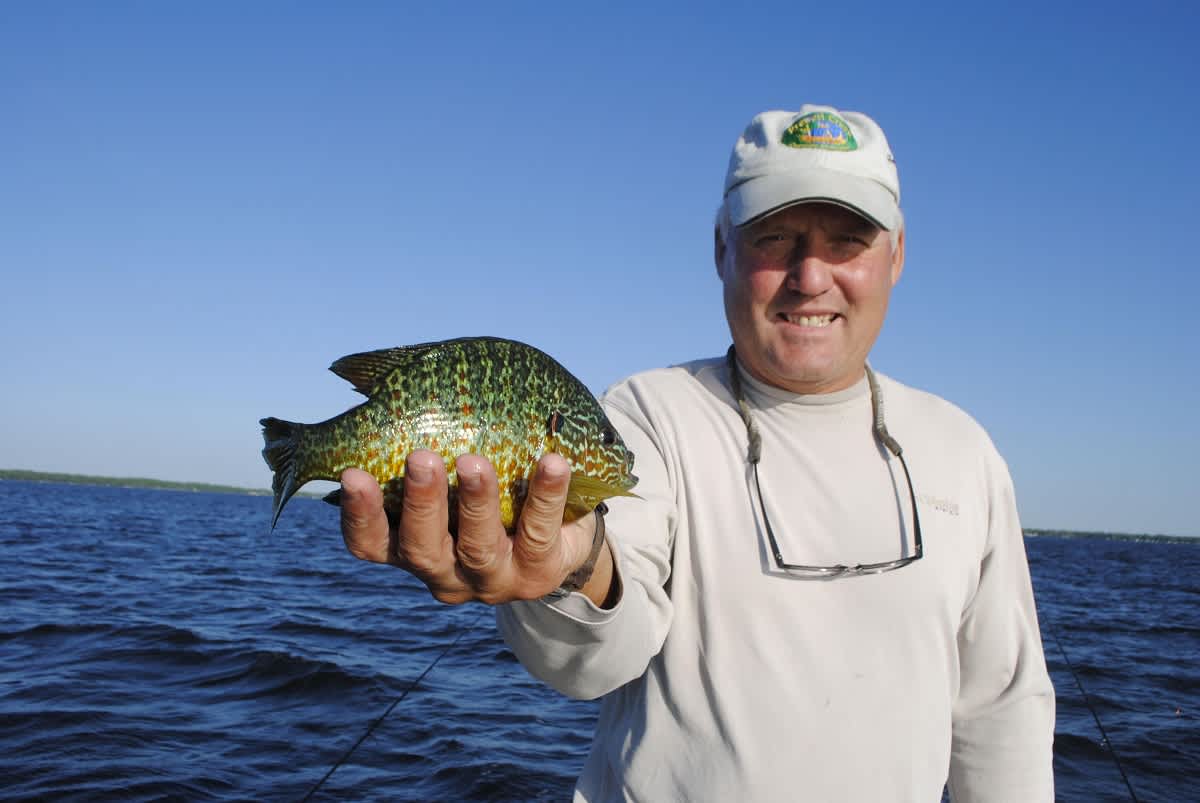Slip Bobbers Produce Results on Michigan’s Largest Inland Lake
Bob Gwizdz 06.26.14

The first thing I noticed after we set off from the launch ramp on the east side of Michigan’s largest inland lake—Houghton Lake—in early evening was the waves. There was a good chop on the water. According to my host, Mike Mol, it was exactly what he wanted.
“You have to have some wind if you’re going to fish with slip bobbers,” said Mol, as he anchored his rig off a sandy point up the lake. “You have to have some water movement. That’s the conveyor belt of food to those fish. It’s like they’re at a feeding station; they set up right off a point or on a corner and they don’t have to do anything—the food comes to them.
“When you get a setup like that, you don’t have to move all night.”

A retired conservation officer, Mol said slip bobber fishing is “probably the most effective way to fish on the lake,” but it’s a technique relatively few fishermen use here. All the other boats we saw were either trolling or drifting.
“I don’t know if people aren’t confident they can find a spot where that works well or they just like to move,” he continued. “Trolling is limited by your ability to get down to a really slow speed. You want to troll between 1.1 and 1.4 miles per hour. If you’re going slower, you’re down in the weeds. And if you’re going faster than that, the fish won’t chase it down.
“If you can’t troll in that sweet spot, you’re better off drifting and that’s what a lot of people do.”
We were fishing two rods apiece—each of us had one with a small hook and one with a small jig—baited with leeches. Because they’re much tougher than worms, leeches will generally hold up for a number of fish before you have to re-bait.
It didn’t take long before we started hitting fish. I boated a 14-inch walleye almost immediately. It was one of a dozen we’d catch that night, only one of which (a just-longer-than-15-inch specimen that Mol caught) we would keep. The majority were just short of legal length.
“I just haven’t seen many legal fish this spring,” Mol said. “You have a batch of fish right at the size limit and just a few bigger than that, fish that are 15 to 18 inches. I don’t think I’ve caught a walleye bigger than 20 inches in a couple of years now.”
That’s what happens on a lake as heavily fished as Houghton.
In between the walleyes, we caught, well, just about everything. We caught bass (both largemouth and smallmouth) and all manner of sunfish—bluegills, pumpkinseeds, and rock bass. We caught a bunch of perch. And we caught a handful of pike, too, though the best of them was still shy of the 24-inch minimum size limit.
The fish seemed to come in waves. We’d catch one species for a while, then another. For a period of time it was a major chore keeping our rods in the water as a whole herd of ‘gills (for which Houghton Lake is semi-famous) stacked up on the point.
“Back in the ‘70s and 80s, anchoring up and bobber fishing was the way to fish Houghton Lake,” Mol said. “They were targeting those big bluegills and anchoring up keeps you in the zone all the time. If you’re drifting or trolling, you go through them, then you get out of them. With bobber fishing, you’re not spending a big chunk of time in water that’s not holding fish. But you’ve got be right on the spot.”

If the wind is right, you can anchor outside of a weed line and let your bobbers drift past the grass. But it’s rare that it works out the way it’s diagrammed in the play book, Mol said.
“It’s not as easy as it looks,” he said. “When you fish weeds, you have to move a lot. When the fish are in the weeds, they don’t move around much. They just camp out there. You’ll catch a few fish, then you have to go find more.”
That’s why he prefers to fish sandy points, he said: the fish move up on them to feed and there’s always new fish coming in.
Mol likes to rig his slip bobber so the leech is about six inches off bottom.
“You don’t want to be right down on the bottom because of the sand grass on the bottom,” he said. “On windy nights with that bobber bouncing around, you’re getting jigged up from six inches to 14 inches off the bottom. It depends on how active the fish are how far they’ll come up off the bottom and walleyes are not going to come way up off bottom unless they’re super active.”
I set the hook on a fish that immediately took drag and put a good bend in my rod. Mol asked whether we’d finally hooked a good walleye, or if it was another bass. I offered that it was too strong to be a walleye and, because it hadn’t come to the surface, it wasn’t likely a bass, either. Probably a pike. We were both surprised when I hauled about an eight-pound bowfin (dogfish) to the surface.
“That’s a benefit to fishing with slip bobbers,” he laughed. “You catch all those species.”
Indeed, we’d boated enough perch and sunfish to put on a good fry and enough bass, pike, and walleye to be entertained. That’s what makes Houghton Lake the destination it is: you are almost guaranteed to catch something, and often a lot of somethings.
“We just didn’t find a real workable batch of walleyes,” Mol said, as we called it a night.
I wasn’t complaining.
For more information on Michigan fishing go to michigan.org. Click here to purchase a Michigan fishing license online.
This article was produced in partnership with Pure Michigan.

